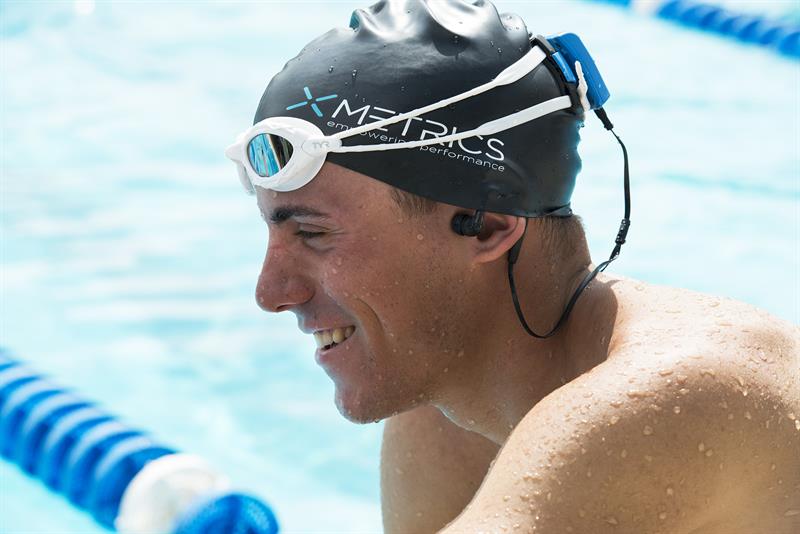Recent advances, such as embroidering circuits into fabric or transparent sensor material that can be printed on to textiles, are helping to create a range of technologies that bring together the clothing, technology and textile industries to create fabrics with capabilities for users as varied as athletes, patients, soldiers and ordinary consumers.
In practical terms, companies like Globe in the US are developing smart fabrics to measure the extreme physiological stress that can be experienced during the course of an individual’s duties – for example, a firefighter or a soldier.
Using smart fabrics technology, the company has developed a Wearable Advanced Sensor Platform (WASP) that is being deployed to track a firefighter’sheart rate, core body temperature, respiration rate, activity levels, posture and other factors, as well as provide tracking and improve overall situational awareness.
According to Chris Hunt, who leads the Electronic Interconnect team at the UK’s National Physical Laboratory (NPL), the demand for smart fabric technology is growing rapidly.
“If you look at the military space, the unmounted soldier might start to wear sensors and communication devices deployed in a base layer. To speed adoption, we need to reduce the weight of the electronics being used and improve the quality of the data being generated.”
“There is a lot happening in terms of innovation,” Hunt suggests. “Whether that involves fibre optics or light to take measurements, it is a fast moving area. No single technology has yet to take hold, but to succeed, it will need to demonstrate that it can be delivered at the right price, that it can survive in the field and that it is reliable.”
The potential of smart fabrics is huge and recent research suggests the market, including fabrics manufactured with smart materials and those that use embedded sensors, could be worth more than $1.8billion by 2021, driven by the IoT, developments in smart materials and in smaller, more powerful sensors.
Research has seen significant developments in electrically conductive yarns and threads, conductive polymers, shape memory materials, phase-changing materials, self-cleaning and antimicrobial materials, as well as nanomaterials. As a result, more applications are moving beyond the laboratory, with end-user applications for the medical, health and fitness, military and security, fashion and non-clothing applications beginning to appear.
Developments are being driven by companies like Adidas, BASF, DuPont,Google, Intel, Levi Strauss, Nike, Philips Healthcare and Ralph Lauren. In the sports clothing market, Adidas, Nike and Under Armour have been investing in fitness app companies and, last year, Adidas acquired fitness tracking company Runtastic in a deal worth more than $200million.
Medical is expected to be the largest market for smart textiles and could be worth $1billion by 2021. Using smart clothing, patients with chronic diseases, such as diabetes and heart problems, could be monitored continuously, with updates being regularly sent to their physicians.
Savings to health providers could be considerable, as Hunt explains. “In the health sector, wound management costs the NHS in Wales around 6% of its budget. With the smart technology available to us, it will be possible to reduce the cost of treatment significantly and enable wounds to heal faster.”
 Wearable technology is helping to improve the performance of top athletes
Wearable technology is helping to improve the performance of top athletes
Sports clothing
A lot of this technology already exists in smart sports clothing but it will need to be better regulated before it is deployed in medical applications. Sensors will need to become more accurate and, in a matter of a few years, smart textiles are expected to consume $134million of sensors, more than half of which will be pressure sensors.
Crucially, smart fabrics will involve putting things into the yarn and attaching sensors to clothing. “That will require devices to be connected, much like with a PCB,” suggests Hunt. “So you need to connect microelectronics, capacitors and the like. At NPL, we have developed a new method for producing conductive textiles which could end up turning a fabric into, effectively, a wearable PCB, connecting all the active parts of the wearable. It can be applied to almost all woven and knitted fabrics – not just nylon and polyester.”
This technique could make the integration of electronics simple and practical by enabling lightweight circuits to be printed directly onto complete garments.
“Our methodology binds, chemically, a catalyst to the fibre – a nanometal seed layer,” explains Hunt. “It is very robust – with a restivity of around 0.2O/sq, depending on the textile – and can be applied at any stage of the manufacturing process. It is highly conductive, provides excellent flexibility and can be used on large areas. The conductive tracks are produced in a four step process and one of these can be patterned using an inkjet printer. We can print complex multitrack circuits or entire fabric coverage.”
 Sensoria's fitness shirt, part of a growing range of wearable technology that brings together clothing, technology and the textile industry
Sensoria's fitness shirt, part of a growing range of wearable technology that brings together clothing, technology and the textile industry
Funding
Smart fabrics are beginning to attract funding and venture capital, benefitting from the interest in the related area of IoT sensors.There are also important textile-specific developments, such as the creation of fabric transistors.
“It is becoming a dynamic market,” says Emanuele Angelidis, CEO of Breed Reply – an advanced incubator that funds and supports IoT start ups. “The number of start ups in this space has accelerated and we’re seeing new businesses springing up across Europe. The number of serious players, however, remains limited.”
Sports clothing, currently at the cutting edge when it comes to the commercialisation of smart fabric technology, has moved beyond running shoes and sweat resistant clothing to embrace innovative software and wearables capable of monitoring fitness levels and other biometrics.
UK SmartLife began life in 2002. Formed by the University of Manchester’s Biomedical Engineering Department and the Textile Department of UMIST it originally focused on developments in smart fabrics and mobile health.
“When we were founded, our focus was on making garments that could be used in medical trials,” explains Martin Ashby, the company’s COO. “We wanted to be able to monitor patient’s vital signs in a normal environment to better understand how the drugs they were testing were working, as well as save time and cut the expense of having to use laboratories.
“The project went well and succeeded as a proof of concept. However, portability was a problem; we didn’t have smartphones or Bluetooth and the electronics were clunky.”
The company has now developed a wearable technology with textile sensors capable of reading a range of biometric signals accurately that is being integrated into sportswear for men and women.
“We partner with leading brands and can provide quality data that was, until now, only available to medics or elite sporting professionals,” explains Ashby. “Our technology is ultimately intended for the medical market but, as a Class 2 product, it will require clinical trials. Our view is that, if we can get the technology right in the sports space, it’ll be workable in most end markets.”
“Sensoria is a good example of the type of company Breed Reply is working with,” explains Angelidis. “It has developed smart socks, infused with textile sensors that can detect foot pressure. Conductive fibres in the sock then relay data to an anklet which uses Bluetooth to communicate with a mobile app.”
Sensoria’s founder and CEO Davide Vigano, noted: “Demand for smart textiles is being driven by users not wanting to have to wear more devices. Most people, we believe, will be willing and open to wearing biometric sensing garments.”
While Sensoria has focused on the sports market, Vigano sees real opportunities in healthcare. “Based on sensors placed in the plantar area of the foot, our SmartMBB application can be used to monitor elderly patients who may be at the risk of falling.”
 Sensoria's smart socks, infused with textile sensors, can detect foot pressure. Conductive fibres then replay, via an anklet, data back to a mobile app (below)
Sensoria's smart socks, infused with textile sensors, can detect foot pressure. Conductive fibres then replay, via an anklet, data back to a mobile app (below)

Reliability
Key to the development of effective smart fabrics is the development of reliable and predictable textile sensors, Vigano suggests. “We’re not there yet, but progress is being made. A key issue is that the sensors have to be capable of sustaining machine wash cycles. It’s challenging; you are not only dealing with hot water, but also with detergents and chemical agents.
“Another issue, which has more to do with the consumer experience, is related to battery technology. It’s behind the curve – will people want garments that will need to be charged every night?”
According to Vigano, lack of progress in battery technology is a real challenge but ‘energy harvesting is coming to the rescue, whether that is solar, temperature or some dynamic component capable of augmenting the battery making the charge last longer’.
“From a market perspective miniaturisation is key,” says Richard Poate, Consumer Products Manager, TUV SUD Product Service, “but so, too, are the aesthetics. Once that has been cracked, the market for smart wearable clothing and accessories will take off.
“We have seen solar panels put into fabrics, but they haven’t looked great. They have been pretty obvious and stiffness has been an issue. Comfort is crucial, but we will see solar panels designed in to more clothing.”
When it comes to standards, there are problems testing smart fabrics, explains Poate.
“There are numerous electrical standards for water and solid ingress. However, when it comes to smart textiles, the available tests are not necessarily suitable. If we take the example of water ingress, the available tests are for enclosures; they are not relevant to what smart textiles will experience.
“While technology moves quickly, standards tend to move painfully slowly. While there are general product directives and specific absorption rate tests, most of this technology will rely on wireless technology, such as Bluetooth, to communicate, I’d suggest developers take their smart fabrics and treat them as they would be treated in the real world. Create your own tests.”
The adoption of smart fabrics will be determined by attitudes, applications and product appearance, as well as by focusing on genuine needs and the technology will need to become commoditised and easily consumed so it is seamless and invisible to the user.
Perhaps tomorrow’s wearable technology needs to disappear from sight to succeed.













